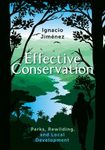By: Randall K Wilson(Author)
396 pages, 14 b/w photos, 22 b/w illustrations, 7 tables
![America's Public Lands America's Public Lands]()
Click to have a closer look
About this book
Contents
Customer reviews
Biography
Related titles
About this book
How it is that the United States – the country that cherishes the ideal of private property more than any other in the world – has chosen to set aside nearly one-third of its land area as public lands? Now in a fully revised and updated edition covering the first years of the Trump administration, Randall Wilson considers this intriguing question, tracing the often-forgotten ideas of nature that have shaped the evolution of America's public land system. The result is a fresh and probing account of the most pressing policy and management challenges facing national parks, forests, rangelands, and wildlife refuges today.
The author explores the dramatic story of the origins of the public domain, including the century-long effort to sell off land and the subsequent emergence of a national conservation ideal. Arguing that we cannot fully understand one type of public land without understanding its relation to the rest of the system, he provides in-depth accounts of the different types of public lands. With chapters on national parks, national forests, wildlife refuges, Bureau of Land Management lands, and wilderness areas, Wilson examines key turning points and major policy debates for each land type, including recent Trump Administration efforts to roll back environmental protections. He considers debates ranging from national monument designations and bison management to gas and oil drilling, wildfire policy, the bark beetle epidemic, and the future of roadless and wilderness conservation areas. His comprehensive overview offers a chance to rethink our relationship with America's public lands, including what it says about the way we relate to, and value, nature in the United States.
Contents
Preface to the Second Edition
Introduction: Why Public Lands?
Rethinking Old Stories
Setting the Stage
Part I: ORIGINS OF THE PUBLIC DOMAIN
1 Building the National Commons
2 Disposing of the Public Domain: From Commons to Commodity
3 A Public Land System Emerges
Part II: AMERICA’S PUBLIC LAND SYSTEM
4 National Parks
5 National Forests
6 National Wildlife Refuges
7 Bureau of Land Management Lands
8 National Wilderness Preservation System
9 National Wild and Scenic Rivers and Trails
10 Parting Thoughts
Appendix A: Major U.S. Public Land Laws and Other Key Turning Points
Appendix B: Units within the National Park System
Notes
Bibliography
Index
About the Author
Customer Reviews
Biography
Randall K. Wilson is professor of environmental studies at Gettysburg College. The first edition of America’s Public Lands won the J. B. Jackson Prize from the American Association of Geographers.
By: Randall K Wilson(Author)
396 pages, 14 b/w photos, 22 b/w illustrations, 7 tables
"This valuable new edition of Randall Wilson's prize-winning book on public lands offers timely updates on Obama and Trump administration legislation and important new material on wild and scenic rivers and trails. Wilson also serves up plenty of fresh examples that reflect the author's ongoing passion for America's greatest gift to itself. If you love the nation's public lands, you will love this book!"
– William Wyckoff, Montana State University; author of How to Read the American West: A Field Guide
"Wilson's America's Public Lands set a new standard in bringing the US public domain into clear view for a broad array of readers. The second edition keeps pace admirably with the changes afoot in environmental politics with Wilson's deft insight, nuance, and wide-ranging expertise. The book guides us to understand the significance of America's public lands and teaches us not to take these lands and waters for granted."
– David Havlick, University of Colorado Colorado Springs
"Thanks to Randall Wilson, we now have a splendid perch from which to view the broad sweep of public lands management in the United States, both spatially and temporally. Eschewing the hackneyed nature-as-commodity versus nature-as-wilderness dichotomy in favor of an approach that tacks much closer to reality, Wilson reminds us that resource conservation and management is – and always has been – a messy business. Perhaps most important, he provides us with the context, tools, and inspiration we need to find common ground as a people and address the environmental challenges that confront us in the twenty-first century."
– Geoffrey L. Buckley, Ohio University




































